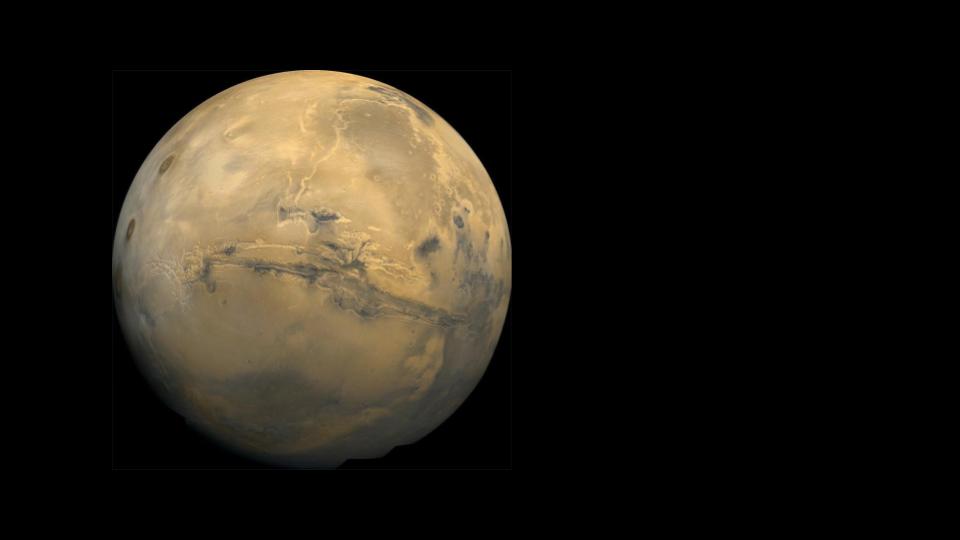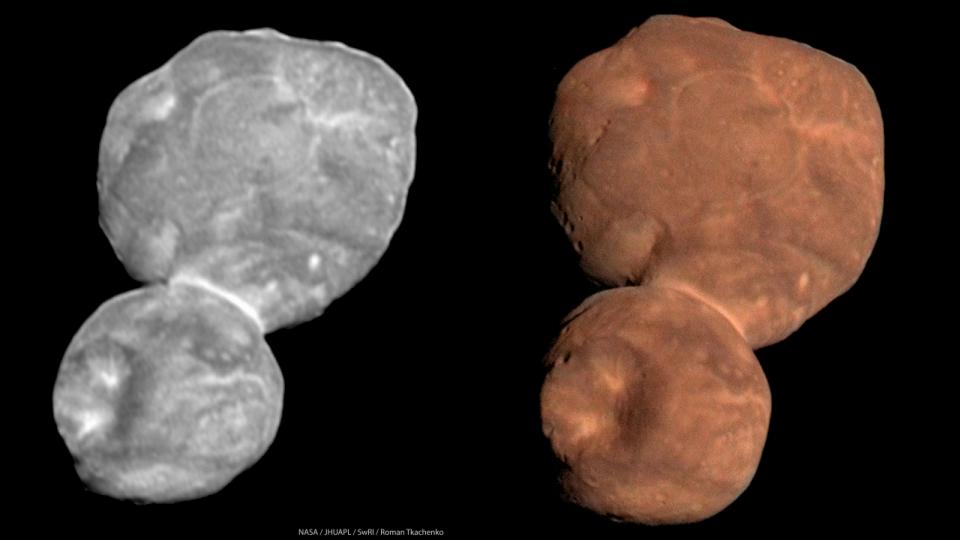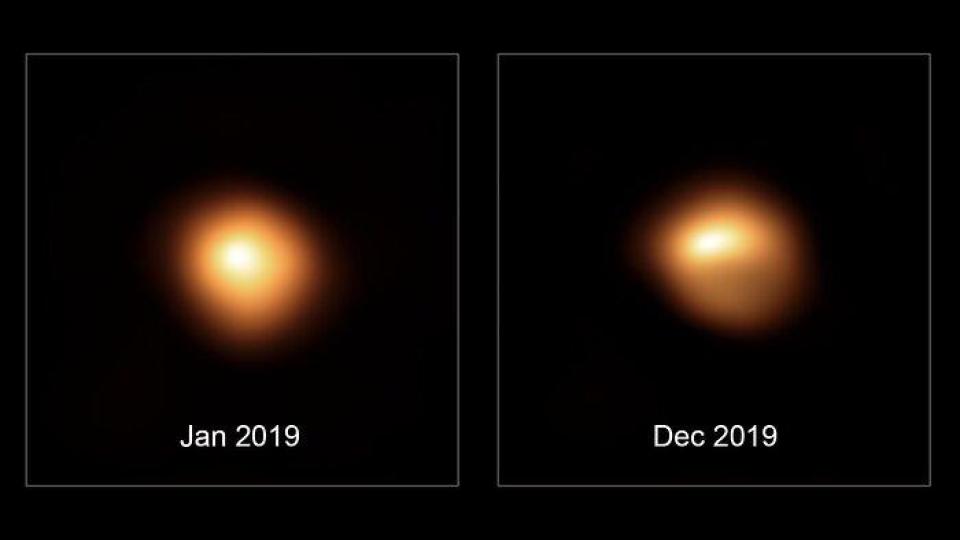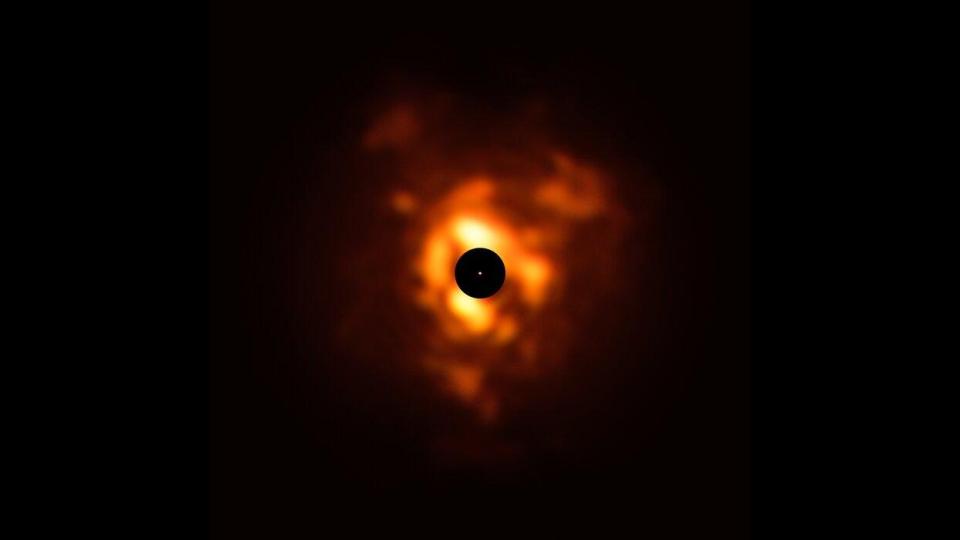Carbon dioxide and salt water ice on Mars melts when the sun’s angle changes, leading to “Crocus Melting”, according to new research. Betelgeuse is actually changing shape due to stellar activity or dust ejection. And the OLA camera is malfunctioning on OSIRIS-REx – so it can’t focus on all the rocks, currently, but this is not expected to cause any issues with the science.

- Salt Water May Periodically Form on the Surface of Mars (PSI)
- Mars: Quantitative Evaluation of Crocus Melting behind Boulders (Astrophysical Journal)
For many of us here in the Northern Hemisphere, winter continues on and on and on. To be fair, it’s only February, so this is normal. Nevertheless, here in Illinois, where it’s been unusually cloudy and has drizzled a half cm of snow day after day after day… This winter has been particularly trying, and I’m fairly convinced that some of the drifts of snow in the constantly shadowed parts of my yard may never melt.
I don’t know if the researchers involved in today’s first story were inspired by this kind of weather, but honestly it wouldn’t surprise me. In new research coming from PSI’s own Norbert Schorghofer, it’s been noted that the ice that builds up in the winter shadows behind boulders can be transformed into liquid water when spring finally comes. Just like here on Earth, Mars has seasons that cause the sun to stay low in the sky during short winter days. As Winter turns to spring, the Sun’s position in the sky will move up, allowing areas that had stayed in shadow for months to suddenly experience light. According to the press release, “The continually shadowed area behind the boulder is very cold, so cold that water ice accumulates in winter. When the Sun rises again in spring, the ice suddenly heats up. In detailed model calculations, the temperature rises from -128° Celsius in the morning to -10° Celsius at noon, a huge change over a quarter of a day.” That ice that had been behind the boulder was made of extremely salty water and carbon dioxide. The carbon dioxide goes straight into the atmosphere, but that salt water can actually melt at -10° C! For a very brief period, this sudden sway in temperature can lead to salt water on Mars surface, and I’m assuming, a bit of mud a few moments later.
This is just a nice paper that transforms a lot of complicated thermodynamics into easy to understand results that also carry a bit of poetry. That carbon dioxide ice we mentioned has a very different melting temperature, and will all sublimate into the atmosphere well before all the water ice melts. The loss of carbon dioxide ice is the first sign of spring on Mars, just like the first flowering of crocus is the first sign of spring in my yard. Showing once again that planetary scientists are better at naming things than astronomers are, the first C02 free day on Mars is called the “Crocus Date.” Since the salter water ice melts on or shortly after the crocus date, it is being called “Crocus Melting.” This poetic term resulted in the work being published in the Astrophysical Journal in a paper named “Mars: Quantitative evaluation of crocus melting behind boulders”. I would like to make it clear, no actual crocus flowers were harmed in this research.

RIGHT: The uniform color and composition of Arrokoth’s surface shows the Kuiper Belt object formed from a small, uniform, cloud of material in the solar nebula, rather than a mishmash of matter from more separated parts of the nebula. The former supports the idea that Arrokoth formed in a local collapse of a cloud in the solar nebula. (Credit: NASA/Johns Hopkins University Applied Physics Laboratory/Southwest Research Institute/Roman Tkachenko)
In other icy news, the New Horizons team has a series of new papers in yesterday afternoon’s issue of Science. These papers look at 2014 Mu69, now named Arrokoth (pronounced AR-oh-kodh). Due to breaking news that I’ll get to in a moment, we’re going to hold off on doing a complete review of this research until Monday. We do want to point out that CosmoQuest played a small role in this work, and Pamela is a co-author on one of these papers. Back in 2011 and 2012, the search for a future target for New Horizons was taking advantage of ground-based telescopes and used citizen scientists – maybe even some of you – to look for Kuiper Belt objects. Pamela wrote that software, and in the process became a minor member of the New Horizons team and this research. But… really this next story is going to take precedence over even our own research.

Our final story of the day came in while this episode was being put together. We have new images of Betelgeuse that show the star is changing in shape! Betelgeuse is one of the very few stars that is just the right combination of close enough and big enough that we can resolve it with the world’s biggest telescope. In January 2019, before we knew Betelgeuse was going to fantastically dim, Miguel Montargès acquired an image of Betelgeuse with the Very Large Telescopes SPHERE instrument. This allows for before- and after-images to be compared, and after-images were taken in December. As this is an ongoing event, these images are being released prior to a paper going all the way through peer review. In the ESO press release, Montarges says “The two scenarios we are working on are a cooling of the surface due to exceptional stellar activity, or dust ejection towards us.” To understand the dust possibility, they also took an image of the system with an occulting disk blocking the brightest light from the disk of the Betelgeuse. This image allows the cloudy glow of expelled dust to be seen surrounding Betelgeuse.

We’re seeing a dying star shed its atmosphere as it gears up to explode. At this point, Betelgeuse is 36% of its normal brightness. We don’t know why – exactly. This star is actively dying. While we know Betelgeuse is totally going to go boom eventually as a supernova, we don’t know if that “eventually” will be observed tonight or 100,000 years (or more) in the future. This is the first time we’ve gotten to watch a star die in detail. Frustratingly, Betelgeuse isn’t visible all year. It can easily be seen in the evening for a while longer… but disappears with the spring. Get out and see it now. Who knows if it will still be there next winter!
And if it goes supernova while in the daytime sky, I will cry. Tonight it is looking shockingly clear, and I for one will be outside with a camera, and maybe even a telescope, trying to get one final image of Betelgeuse for the season.
- Status update: OSIRIS-REx Osprey Flyover (Phys.org)
Ok – that was the final story, but we have an additional note because we have additional breaking news. Last night we got word that the OLA, or the laser altimeter on the OSIRIS-REx spacecraft didn’t work as planned during a recent dress rehearsal of a sampling approach to the Osprey sample site on Bennu. The biggest impact this has is the images are likely going to be out of focus because OLA’s distance measurements are used to tell the camera where to focus. While that is super annoying, let’s face it, Bennu is rocks all the way down, and all the camera is going to do is show us more rocks. The science that OLA was designed to accomplish is complete. While the team hopes to get the instrument fully functional again, OSIRIS-Rex’s mission still looks good to go as planned. We’ll keep you posted as we learn more.
<———————>
And that rounds out our show for today.
Thank you all for listening. The Daily Space is written by Pamela Gay, produced by Susie Murph, and is a product of the Planetary Science Institute, a 501(c)3 non profit dedicated to exploring our Solar System and beyond. We are here thanks to the generous contributions of people like you. Want to become a supporter of the show? Check us out at Patreon.com/cosmoquestx


 We record most shows live, on Twitch. Follow us today to get alerts when we go live.
We record most shows live, on Twitch. Follow us today to get alerts when we go live.